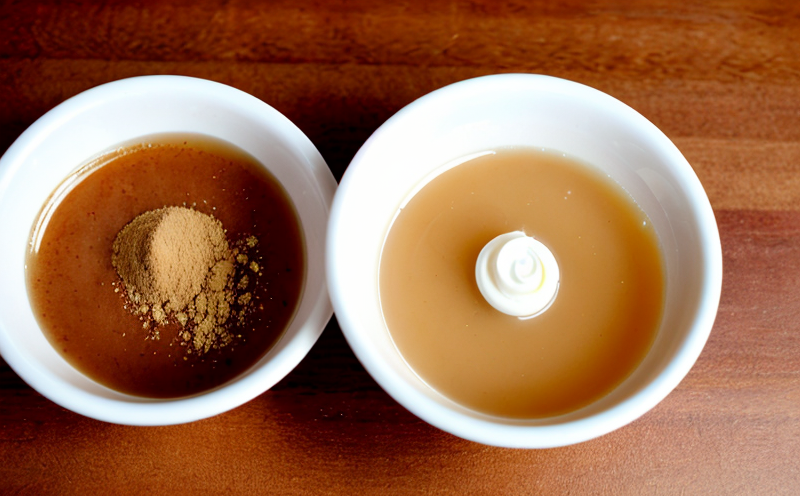ISO 22964 Preservative and Sweetener Residue Testing in Dairy
The implementation of ISO 22964 ensures compliance with international standards for the presence of preservatives and sweeteners in dairy products. This service is crucial for food manufacturers seeking to ensure their products are free from harmful residues that could compromise product safety, quality, and consumer trust.
ISO 22964 focuses on the analysis of preservatives (such as benzoates, sorbates, and parabens) and sweeteners (like sucralose, aspartame, and stevia derivatives) in dairy products. The residues from these additives can have significant implications for public health if they exceed acceptable limits.
In the context of dairy production, the presence of preservatives is primarily aimed at extending shelf life by inhibiting microbial growth. However, excessive or improperly used preservatives may lead to undesirable taste profiles and potential toxicity concerns. Sweeteners, on the other hand, are added to enhance flavor but must be controlled to prevent over-concentration which can affect product texture and nutritional balance.
The testing process for ISO 22964 involves several critical steps: sample preparation, extraction of residues, purification if necessary, detection using analytical techniques such as High-Performance Liquid Chromatography (HPLC) or Liquid Chromatography-Mass Spectrometry (LC-MS), and quantification. The laboratory must adhere strictly to the ISO 22964 guidelines to ensure accurate and reliable results.
Sample preparation is a meticulous process that involves homogenization, filtration, and dilution if required. This step ensures that all residues are evenly distributed in the sample for uniform analysis. Once prepared, the samples undergo extraction using solvents like acetonitrile or methanol to release preservatives and sweeteners into solution.
Purification steps might be necessary depending on the complexity of the matrix, especially when dealing with dairy products that contain proteins, fats, and other components which could interfere with detection. The purified extracts are then analyzed using sophisticated chromatographic techniques capable of separating complex mixtures and identifying individual compounds.
Once identified and quantified, the data is reported according to ISO 22964 requirements. This includes providing concentrations of detected preservatives and sweeteners alongside their respective limits of detection (LOD) and quantification (LOQ). Compliance with these standards ensures that dairy products meet regulatory thresholds set by health authorities worldwide.
The importance of this service extends beyond mere compliance; it plays a pivotal role in safeguarding public health. By ensuring that preservatives and sweeteners are used correctly, manufacturers can maintain the quality and safety of their products while also upholding consumer confidence. This service supports food safety initiatives by providing transparent data on additive usage, helping brands build trust with consumers who value natural ingredients over artificial ones.
Additionally, adherence to ISO 22964 helps businesses avoid legal risks associated with non-compliance and potential product recalls. It also enables companies to stay ahead of regulatory changes that may affect the use or labeling requirements for certain additives in dairy products.
Why It Matters
Complying with ISO 22964 is essential for several reasons:
- Consumer Trust: Ensures that consumers receive dairy products free from harmful residues, fostering trust and loyalty.
- Regulatory Compliance: Helps businesses meet stringent international standards set by health authorities to protect public health.
- Product Safety: Reduces the risk of adverse reactions due to excessive or improperly used preservatives and sweeteners.
- Risk Management: Minimizes potential legal issues and financial losses resulting from product recalls or lawsuits.
Quality and Reliability Assurance
The reliability of the results obtained through ISO 22964 testing is critical for maintaining high standards in dairy production. Quality assurance involves multiple layers:
- Method Validation: Ensuring that analytical methods used are robust and reproducible.
- Standard Operating Procedures (SOPs): Adherence to established protocols for sample preparation, extraction, purification, and analysis.
- Certified Reference Materials (CRMs): Use of certified reference materials to calibrate instruments and validate analytical methods.
Environmental and Sustainability Contributions
The process of ISO 22964 testing contributes positively to environmental sustainability by:
Reducing Waste: Efficient sample preparation minimizes the amount of waste generated during the testing process.
Conserving Resources: By ensuring proper use of preservatives and sweeteners, resources are conserved in terms of raw material usage and energy consumption required for production processes.





